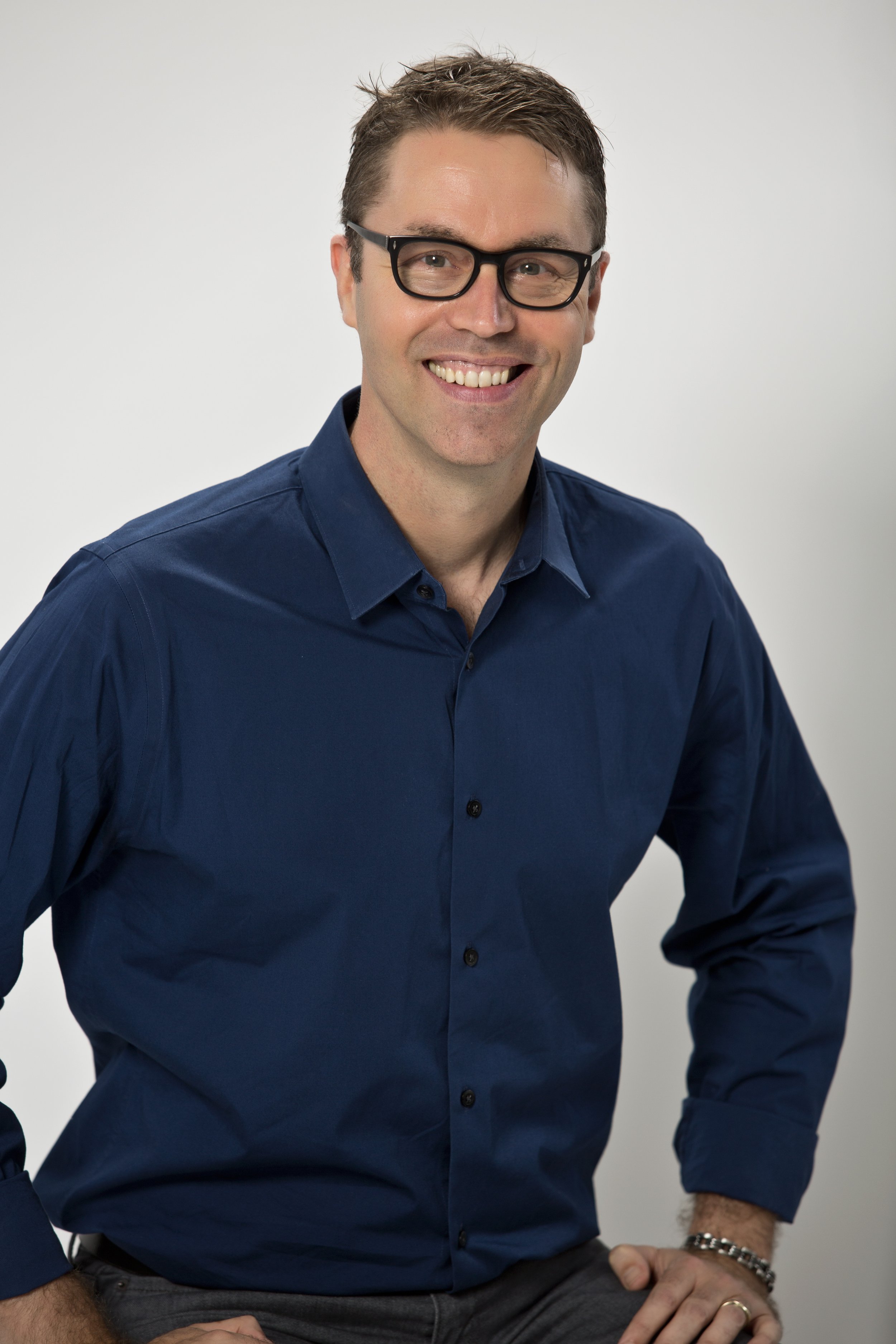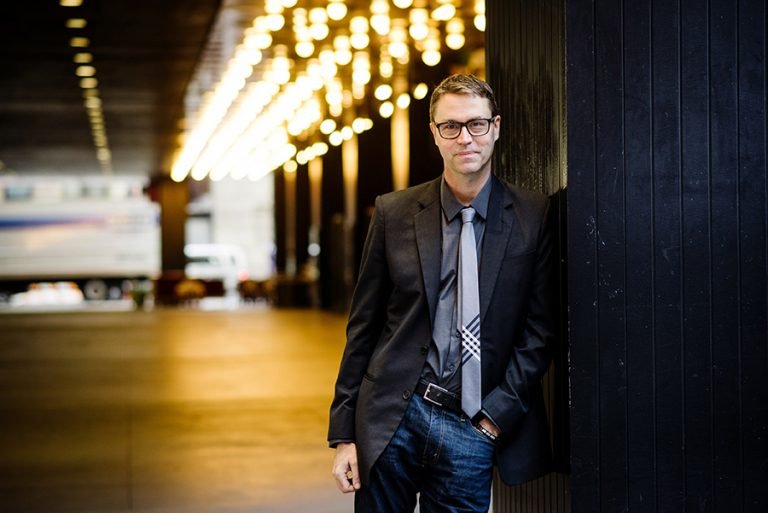Interview with Deke Sharon
Deke Sharon is known for his work as the primary arranger for all three Pitch Perfect films, Disney’s DCappella ensemble, NBC’s The Sing Off , and is considered the “godfather of contemporary a cappella.” Deke also happens to be a long-time ArrangeMe and Noteflight user and we had the chance to catch up with him about his arranging process, philosophy, and the recent release of his DCappella arrangements via ArrangeMe.
ArrangeMe: How did you get started arranging?
Deke Sharon: I sang barbershop in high school and fell in love with the tight harmonies and a cappella sound. I wanted to sing more contemporary material, but it didn’t exist so I had to arrange it myself! I started experimenting with vocal percussion out of necessity to solve the rhythm problem in a cappella and figured out there was a whole lot you could do with four singers and a vocal percussionist! I started arranging everything I could and there was a season in the 90’s where I was doing up to five arrangements per day…if you’ll pardon the Malcom Gladwell reference, I’m well beyond my 10,000 hours!
AM: What does your arranging process look like?
DS: I have a 10-step method that I teach to students, which is the first chapter of my A Cappella Arranging book. But truthfully, I’ve been arranging so long, I just dive right into whatever song I’m working on and follow my instincts. A professional painter doesn’t think about how they paint. They just paint! My primary goal for anything I arrange is “how can I make this group shine with this arrangement and make their performance memorable?” I want them to connect with their audience as authentically as possible. When selecting songs, bring the song to the group, don’t take the group to the song. In other words, how can this song serve the group as well as possible and how can this song be unique to us beyond the original? Sometimes a great song doesn’t work with the group you’re arranging for and that’s okay. Serve the song! Serve the group!
”
Serve the song! Serve the group!”
– Deke Sharon
AM: How did you get the DCappella gig?
DS: Kristen Anderson-Lopez was one of the writers on InTransit, Broadway’s first a cappella musical for which I did all the arrangements. At the end of the show’s run, we got stuck in a blizzard with Disney’s head of music and they asked if I would consider creating a professional a cappella group, and when the Mouse calls, you say “yes”! The group is not standard a cappella voicing: it’s a 7-part group (Soprano, Mezzo, Alto, Tenor, Bari, Bass, plus vocal percussionist) whereas traditional contemporary a cappella is only 5-parts. The extra two parts allows for so much more flexibility in the arranging approach.
Hal Leonard published a 12-song book of arrangements only available on the 1st North American tour prior to Covid, but I have continued to write charts and produce for them since they were all kept on during the pandemic to continue to create video content, etc. I am so excited that now all of the DCappella charts can be made available to everyone through the recent licensing deal with Hal Leonard/ArrangeMe and Disney!
AM: Do you take a different arranging approach for a group like DCappella than you do for other ensembles/commissions?
DS: There are arrangers who have a specific sound or style, like Gene Puerling, or in the choreography world, Bob Fossi. You can instantly tell when you are hearing or seeing their work. There’s nothing wrong with pursuing your own unique sound, but I want to be a polymorph to serve the song and serve the group I’m working for, not my own sound. For DCappella, the first arrangements I did were a more center-of-the-road, “expected” arranging approach to the classic Disney repertoire to help the group get started. Now that they are more established, I’m exploring ways to make the charts more unique and arrange in a style that emulates modern hits more closely, but still trying to retain the Disney flavor.
I should also say that I’m not just arranging for the audience/singer connection, I very much want to meet the group where they are. In general, I have no interest in writing a chart that is more difficult than the group can handle. At the same time, the arrangement(s) should be enjoyable after multiple performances so the singers find it inspiring when they perform it night after night.
AM: What do you find most rewarding about arranging music? Most challenging?
DS: The most rewarding thing about this job is when I get to experience the final product. The notes on the page aren’t the music, the notes are the road map for the music. The music is the performance experience! Arrangers can sometimes get too caught up in the notes on the page and that’s unfortunate…seeing the joy on the faces of the performers and the audience as they experience the music together is the best!
The most challenging part about arranging is getting a commission to arrange a song you don’t really like or connect with. In those situations, I always have to find something that I can connect with and then try to find out what is meaningful about the song to other people and focus on that.
AM: How do you let people know they can buy your sheet music? Do you have any kind of marketing plan to get the word out about your charts and are you able to track the results from that marketing effort?
DS: I try to be very intentional about leveraging my social media accounts to post about anything new that comes out, but careful not to flood with too much content. ArrangeMe is the fastest, most effective way to make your arrangements available to the world that exists, and it’s free to use! I own a publishing company (CAPublishing.com), but we link directly to the SMP/SMD pages for customers to purchase the charts. I know choral arrangers may balk at this, but I always publish my charts at the lowest price allowed because I want singers to have access to as much music as possible.
I would encourage all ArrangeMe users to have a place where their stuff is in a good searchable list with YouTube links, product pages, etc. so people can find their material. ArrangeMe has done most of the work for you, all you have to do is tell people it’s there!
AM: In your field of vocal/a cappella arranging, what kinds of arrangements are the most in demand? Is it always new pop stuff or are the classics and public domain songs still viable?
DS: Simple voicings of pop tunes. Here’s a challenge: take a new pop tune and try to arrange it for 3-part SSA voicing…it’s SO DIFFICULT! People generally want to sing the music of their life, which is current pop music, so that’s always in demand. How can you arrange it in a way that is accessible and easy to perform successfully? Contemporary a cappella is the gateway into the choral program at schools…it’s the absolute best way to get young people engaged in singing, and then you can get them singing classics and PD material.
I just uploaded a song I was commissioned to write last year. It was an SATB piece for Choral America called “America In Song," celebrating diversity in America. It’s essentially “America the Beautiful” with bits of cultural music interwoven, global PD folk songs mixed in with America the Beautiful as “tent posts” throughout. It’s very simple SATB writing, but could be sung by a middle school choir! Those kinds of arrangements are really fun and important to balance out the pop stuff to give singers a more diverse musical experience.
AM: Looking back, is there anything you would change in how you started out selling your arrangements? Anything you wished you’d learned sooner or any assumptions you had to correct?
DS: Copyright law is challenging. I really wish sheet music would work like mechanical (audio) licensing. However, Hal Leonard is the mothership…the “Coca Cola vending machine.” It’s way better to be in the Coke machine, even if you’re the iced tea at the bottom…you’re still in the machine! The ArrangeMe platform is such a win-win and I feel lucky to have caught the first wave of the program.
As far as arranging mistakes, early on I made the mistake of assuming my charts were better than they were. I arranged complex material at the expense of the ability to connect with the audience and each other on stage and to the emotion of the song.
AM: With your success and name recognition as an arranger, why would you upload your music to ArrangeMe rather than sell through your website where you would keep 100% of the sales?
DS: The legal licensing process is a HUGE DEAL! I simply don’t have the time or patience to pursue a license every time I arrange a song. Also, the ability to have everything in a place that has the widest possible reach is an incredible asset and something I could never do on my own. For original/PD charts, it is well-worth the 50% to get your music out to the world so that people anywhere can find it. When people are able to find your music, they will find you!
“When people are able to find your music, they will find you!”
– Deke Sharon
AM: At this point in your career, what is your ‘100-foot wave’? What, if anything, are you chasing?
DS: What is my 100-foot wave? Honestly, I feel like I’ve been riding a 1,000 foot wave for the past decade. I wanted to get more people singing and popularize a new way of singing a cappella, I didn’t expect to make multiple movies, television shows around the world, the first a cappella Broadway musical, write 6 books and so on. I feel lucky beyond measure, and I’m not planning on getting off this board any time soon!
In addition to his extensive arranging catalog, Deke has written these three books published by Hal Leonard. If you are interested in arranging for singers on any level, we highly recommend picking these up!
To find out more about Deke and his music, follow @dekesharon on Facebook, Twitter, Instagram, and YouTube, and visit dekesharon.com.






